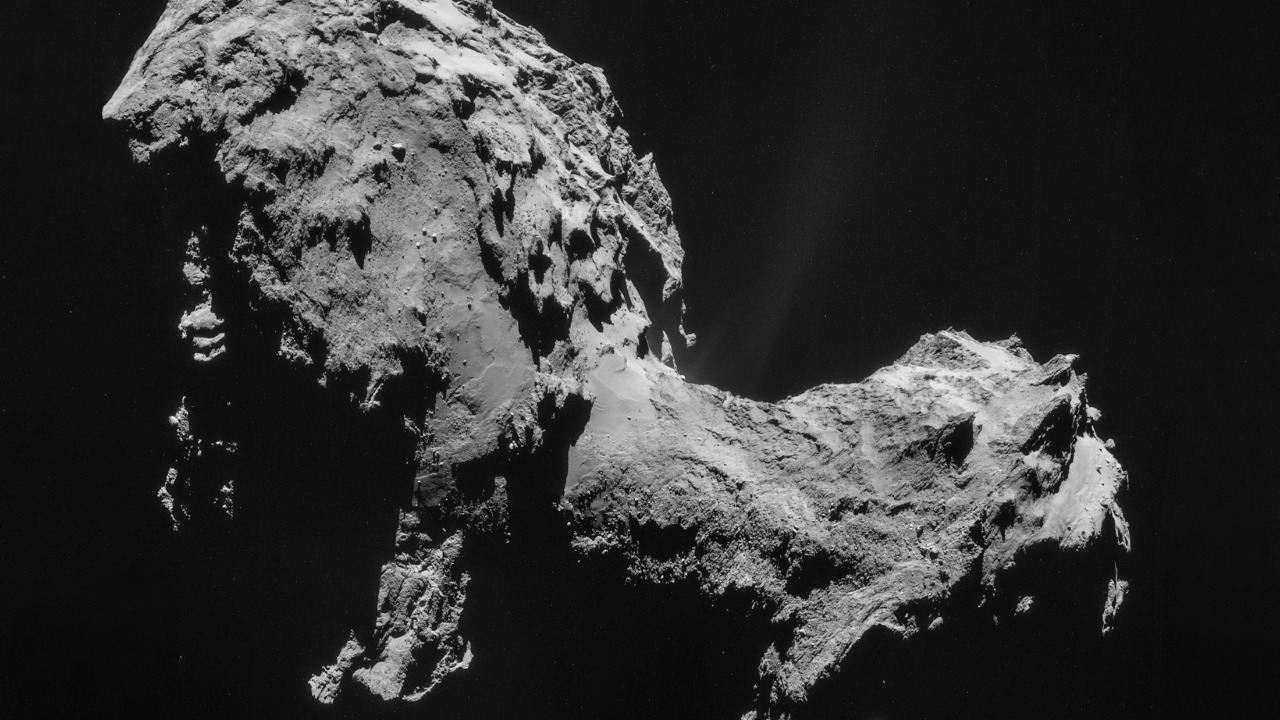
In a surprising twist to our understanding of comets, mysterious radio signals have been detected emanating from comet 67P/Churyumov–Gerasimenko. These signals, recorded at frequencies between 40 and 50 kilohertz, have left scientists, including those from the European Space Agency’s Rosetta mission and NASA’s Comet Nucleus Tour team, scratching their heads as they try to decipher their origins.
Discovery of the Signals
The initial detection of these radio signals occurred on October 25, 2014, when the European Space Agency’s Rosetta spacecraft was in its close-orbit phase around the comet. The spacecraft’s Langmuir Probe and Waves instrument picked up the radio bursts as it approached 67P/Churyumov–Gerasimenko at a distance of 186 kilometers. The signals were intermittent and were recorded over several hours, with frequencies ranging between 40 and 50 kilohertz. According to an ESA mission update, these signals were unlike anything previously seen from a comet, a sentiment echoed by lead researcher Karl Battams from NASA, who stated, “These signals are unlike anything we’ve seen from a comet before.”
Scientific Context of Comet 67P
The Rosetta mission, launched on March 2, 2004, by the European Space Agency from Kourou, French Guiana, was designed to study the composition and activity of 67P/Churyumov–Gerasimenko. The comet has a nucleus approximately 4 kilometers in diameter and reached its perihelion distance of 1.24 astronomical units on August 13, 2015, as per NASA’s Solar System Exploration. Prior to the detection of these radio signals, the mission had already made significant discoveries, such as the detection of water vapor and organic molecules on the comet.
Nature and Characteristics of the Emissions
The signals detected by Rosetta have been classified as “whistler waves”, a type of radio wave that propagates along magnetic field lines at sub-kilohertz frequencies. This classification was made in a study published in Nature Communications on June 15, 2016. The study also found a correlation between the signals and solar wind interactions, which occurred when 67P/Churyumov–Gerasimenko was 3 astronomical units from the Sun. Despite their low intensities, the signals were persistent, raising questions about the plasma density around the comet, as noted in an ESA technical report.
Theories on Signal Origins
Scientists have proposed several theories to explain the origin of these signals. The leading hypothesis suggests that the waves are generated by solar wind electrons interacting with the comet’s coma. This theory is supported by simulations from the Rosetta Plasma Consortium. However, alternative ideas, such as outgassing-induced electromagnetic disturbances, have been dismissed due to mismatched timings. Despite these theories, the origin of the signals remains a mystery. As Karl Battams from NASA puts it, “It’s not aliens, but it’s still baffling how a neutral body like a comet produces such structured emissions.”
Implications for Comet Research
The detection of these signals has significant implications for our understanding of comets. It challenges existing models of cometary magnetospheres, which were largely based on data from missions like NASA’s Deep Impact on comet Tempel 1 in 2005. The signals also provide new insights into solar system plasma physics, with potential applications to interstellar objects like ‘Oumuamua, as noted in follow-up ESA analyses. Furthermore, ongoing data analysis from Rosetta’s dataset, archived at the Planetary Data System, could help refine these theories.
Future Investigations and Open Questions
Despite the progress made in understanding these signals, many questions remain. To answer these questions, scientists plan to use ground-based radio telescopes, such as the Low Frequency Array (LOFAR) in the Netherlands, to monitor similar comets. One of the unresolved puzzles is why the signals peaked at 45 kHz specifically, as noted in the 2016 Nature paper. As Claire Pullar from ESA stated, “This discovery opens a window into cometary secrets we didn’t know existed.”
More from MorningOverview